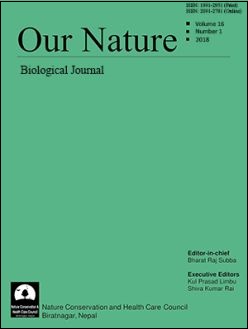Response of mass selection in maize (Zea mays L.)
DOI:
https://doi.org/10.3126/on.v16i1.22119Keywords:
Maize genotypes, Ass selection, Agronomical traits, Grain yieldAbstract
This study was conducted to quantify the progress towards grain yield and agronomic traits in maize genotypes through mass selection. The original maize population and the population derived after five cycles of mass selection were planted for comparison at research field of National Maize Research Program, Rampur, Chitwan, Nepal during winter season of 2011-2012. The maize genotypes were Arun-1EV, Arun-4, Pool-17, P501SRCO × P502SRCO, BGBYPOP, Across9942 × Across9944, S99TLYQ-B, S99TLYQ-AB and S01SIWQ-3, respectively. The experiment was laid down in randomized complete block design with three replications. Each replication consisted of 180 rows; 20 rows of each genotypes. The results showed that there was significant reduction in plant height, ear height, tasseling days, silking days, disease severity however significant increment in grain yield. The results showed that phenotypic superiority of the selected population over the original population was obvious.
Downloads
Downloads
Published
How to Cite
Issue
Section
License
This license enables reusers to distribute, remix, adapt, and build upon the material in any medium or format for noncommercial purposes only, and only so long as attribution is given to the creator.




